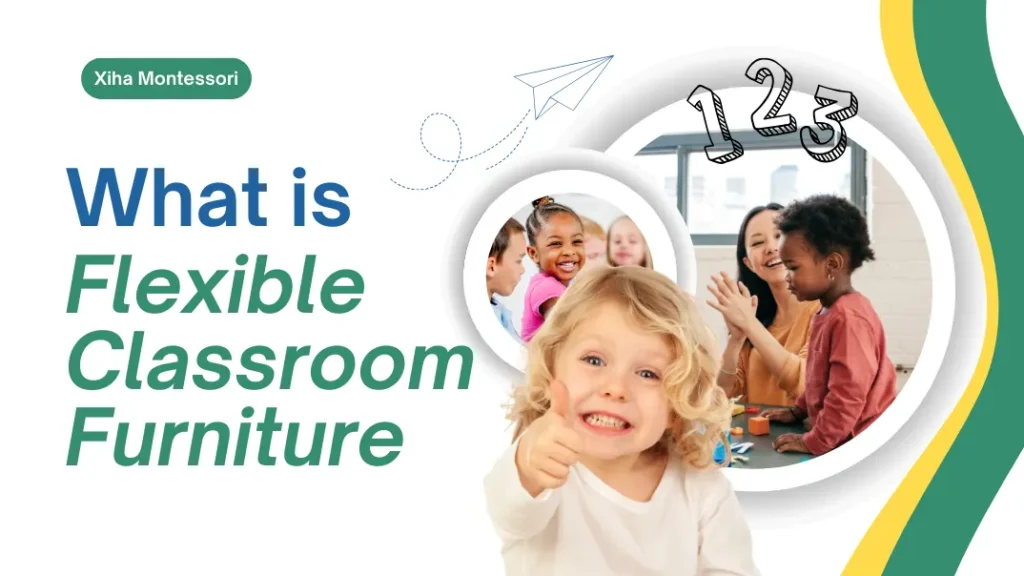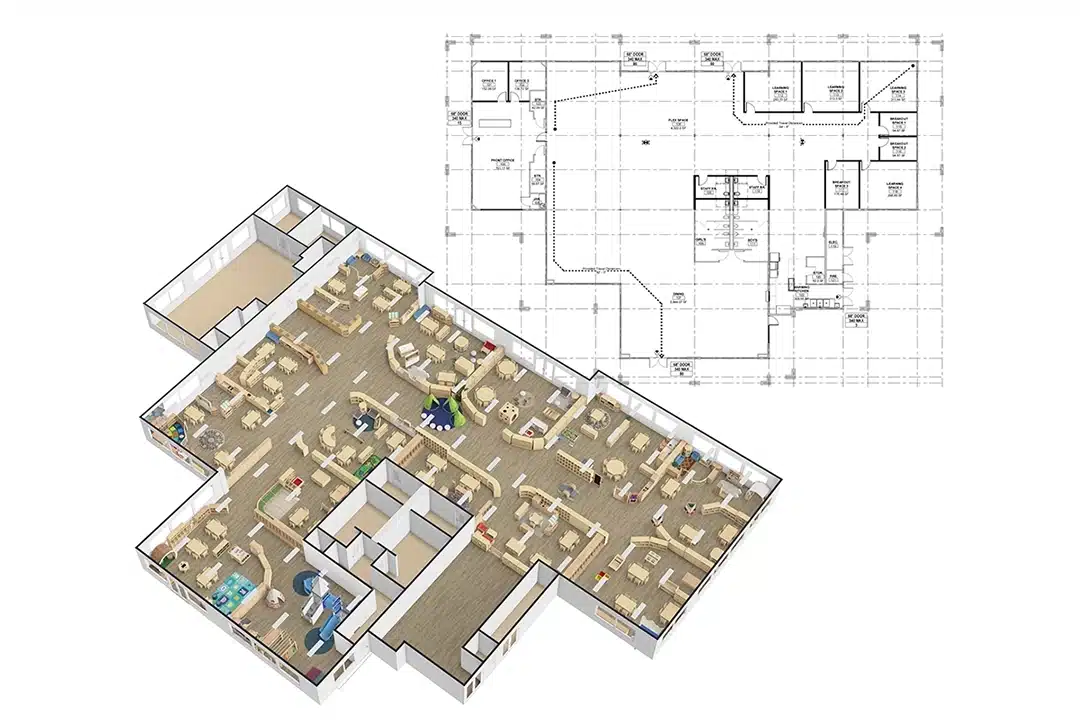Do you feel like traditional classroom furniture limits creativity and student interaction? Do you struggle to create a space that adapts to various learning activities? How can the furniture in your classroom influence learning outcomes? These are common challenges for educators looking to improve student engagement and adaptability in the classroom.
Flexible classroom furniture is the solution to these challenges. Designed to be versatile, movable, and adaptable, this type of furniture allows for easy reconfiguration to support various teaching styles, learning activities, and group interactions. Educators can foster a dynamic learning environment that promotes collaboration, engagement, and creativity by using flexible furniture. The furniture’s adaptability ensures that classrooms can easily transition from one type of activity to another—a group project, independent work, or a whole-class discussion.
Flexible classroom furniture provides a safe, comfortable, and collaborative space for students to express themselves and develop their skills. Let’s explore flexible classroom furniture, its benefits, and how it enhances the learning experience.

Introduction to Flexible Classroom Furniture
Flexible classroom furniture is designed to easily rearrange, move, and adjust to suit different teaching methods and learning activities. Unlike traditional, fixed classroom furniture, flexible options include chairs, desks, tables, and storage solutions that can be quickly modified to accommodate a class’s shifting needs.
The primary objective of flexible classroom furniture is to enable students to interact, collaborate, and engage in different learning experiences. Flexible furniture supports various activities—from small group work to individual learning and large group discussions- allowing for easy reconfiguration.
Key Features of Flexible Classroom Furniture
- Mobility: Most flexible classroom furniture has wheels or casters, allowing pieces to be moved and rearranged with minimal effort. This enables educators to adapt the room setup for various activities or teaching methods.
- Modular Design: Many flexible furniture pieces are modular, meaning they can be grouped or spread apart depending on the need. This provides greater freedom in how spaces are used, making creating small workstations or larger collaborative areas easier.
- Ergonomics: The design of flexible classroom furniture often prioritizes comfort and health. Adjustable chairs, desks, and tables help accommodate students of all sizes and provide ergonomic support, contributing to better posture and reduced discomfort.
- Adaptability: The adaptability of flexible furniture extends beyond mobility. It also includes features like adjustable heights for desks or tables, foldable surfaces for easy storage, and multi-functional pieces for multiple purposes. This allows the furniture to grow with the changing needs of the classroom.

Benefits of Flexible Classroom Furniture
Integrating flexible classroom furniture brings numerous benefits to both students and educators. These advantages are essential for creating a more engaging, interactive, and effective learning environment.
Benefits of Flexible Classroom Furniture for Students
The most significant benefit of flexible classroom furniture is its positive impact on students. Some of the ways it enhances the learning experience include:
- Improved Engagement: Flexible seating options allow students to choose the best setting, increasing participation and focus.
- Collaboration: The ability to move furniture encourages group work and peer-to-peer learning, which is essential for developing social and communication skills.
- Comfort: Adjustable desks and chairs allow students to work in positions that are comfortable and conducive to learning, reducing distractions caused by discomfort.
- Creativity and Independence: Flexible classroom furniture helps students feel more in control of their learning environment, boosting creativity and independent thinking.
Benefits of Flexible Classroom Furniture for Teachers
While students benefit from flexibility in their classroom environment, teachers also experience advantages. Some of the key benefits include:
- Efficient Classroom Management: The ability to rearrange the classroom layout based on the lesson allows teachers to manage different learning activities more effectively.
- Enhanced Student Interaction: With flexible seating and tables, teachers can easily set up learning stations, discussions, or group work.
- Versatile Teaching Styles: Teachers can easily adapt their teaching strategies to meet the needs of individual students or the class’s needs, creating a dynamic learning experience.
- Ease of Technology Integration: With adaptable furniture, integrating technology into lessons becomes seamless and less disruptive to the class’s flow.
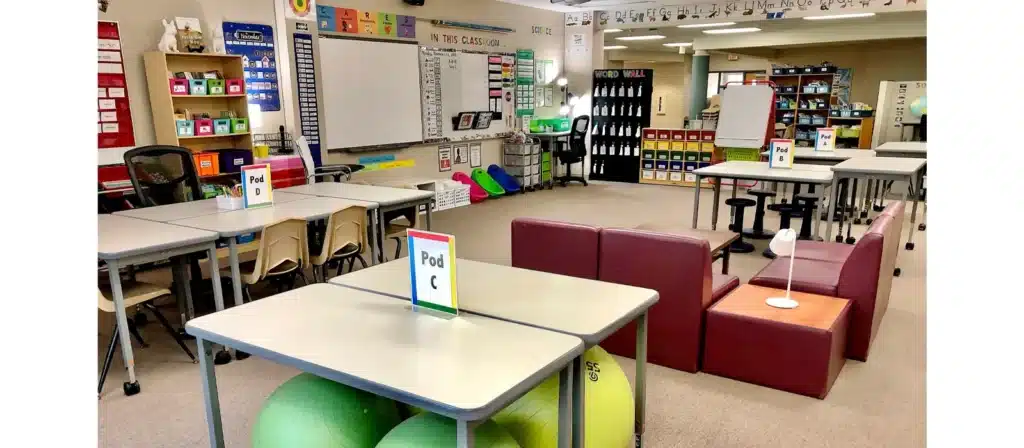
Practical Considerations When Choosing Flexible Classroom Furniture
While the benefits of flexible classroom furniture are clear, several factors must be considered before purchasing. Here are some key considerations:
1. Budget
Flexible classroom furniture can be an investment, and it’s important to consider the budget when purchasing. While flexible furniture may have a higher upfront cost than traditional furniture, its long-term benefits—such as increased student engagement and improved learning outcomes—can make it worthwhile. Many flexible furniture pieces are also durable and can be used for several years.
2. Space and Layout
The layout of your classroom plays a big role in how flexible furniture will be used. Before purchasing, assessing the available space and considering how furniture will be arranged is important. Think about the size of the room, the number of students, and the different learning activities you plan to implement. Choose furniture that complements the space and allows for easy rearrangement.
3. Durability and Quality
Flexible classroom furniture should be durable enough to withstand frequent use and movement. When selecting furniture, look for pieces that are well-constructed and made from high-quality materials. Sturdy and reliable furniture will last longer, reducing the need for replacements and repairs.
4. Ease of Movement and Storage
Look for furniture that is easy to move and store. Some flexible furniture pieces come with locking casters that make it simple to rearrange the layout, while others are lightweight and easy to lift. Additionally, consider whether the furniture can be easily stored when not in use. Foldable desks or stackable chairs can save space and keep the classroom organized.
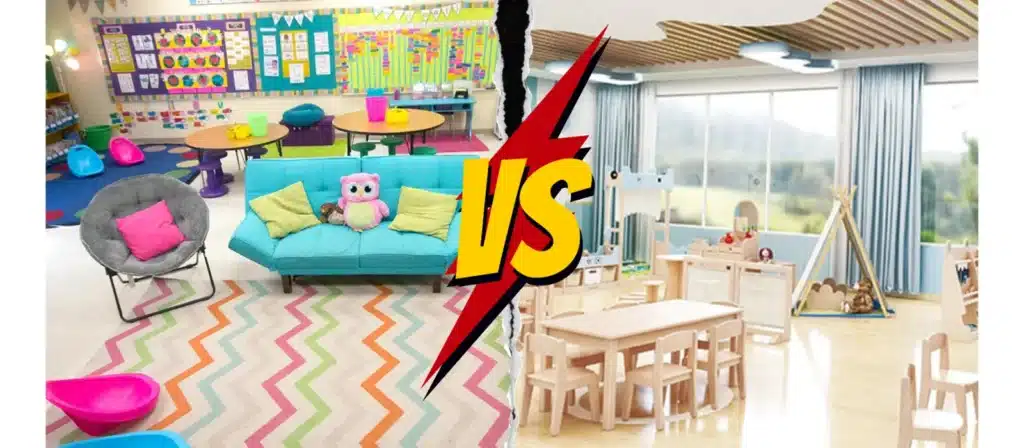
Flexibility vs. Traditional Classroom Furniture: A Comparison
The differences are striking when we compare flexible and traditional classroom furniture. Traditional classroom furniture is designed for static use—rows of desks facing the front with chairs fixed to the floor. This setup works for lectures and individual tasks but limits interaction, engagement, and adaptability. On the other hand, flexible classroom furniture is designed to support various learning activities, offering mobility, adaptability, and comfort.
| Feature | Flexible Classroom Furniture | Traditional Classroom Furniture |
|---|---|---|
| Mobility | Easy to move and rearrange | Fixed in place, difficult to move |
| Adaptability | Can be adjusted for different activities | Limited adaptability |
| Comfort | Ergonomically designed, adjustable | Often uncomfortable and rigid |
| Collaborative Potential | Encourages group work and interaction | Primarily focused on individual work |
| Storage | Often stackable or foldable | No special storage features |
| Space Efficiency | Can be reconfigured to maximize space | Takes up fixed space |
Must-Have Flexible Classroom Furniture
Certain types of flexible classroom furniture are essential to create a classroom that supports dynamic learning. Key pieces include:
- Adjustable Desks: Desks that can be raised or lowered to accommodate standing or sitting positions promote better posture and flexibility during lessons.
- Movable Chairs: Lightweight, easy-to-move chairs that allow for quick reconfiguration of seating arrangements. They can be grouped for teamwork or arranged in rows for focused work.
- Collaborative Tables: Tables that can be easily pushed together or pulled apart, allowing for small-group and whole-class discussions.
- Modular Seating: Flexible seating systems that can be rearranged to create different layouts—ideal for varying group sizes or individual studies.
- Soft Seating Options: Bean bags, lounge chairs, or cushioned stools provide comfortable seating that encourages informal discussions and brainstorming.
- Storage Solutions: Mobile carts or cubbies make storing materials easier and keep the classroom organized.
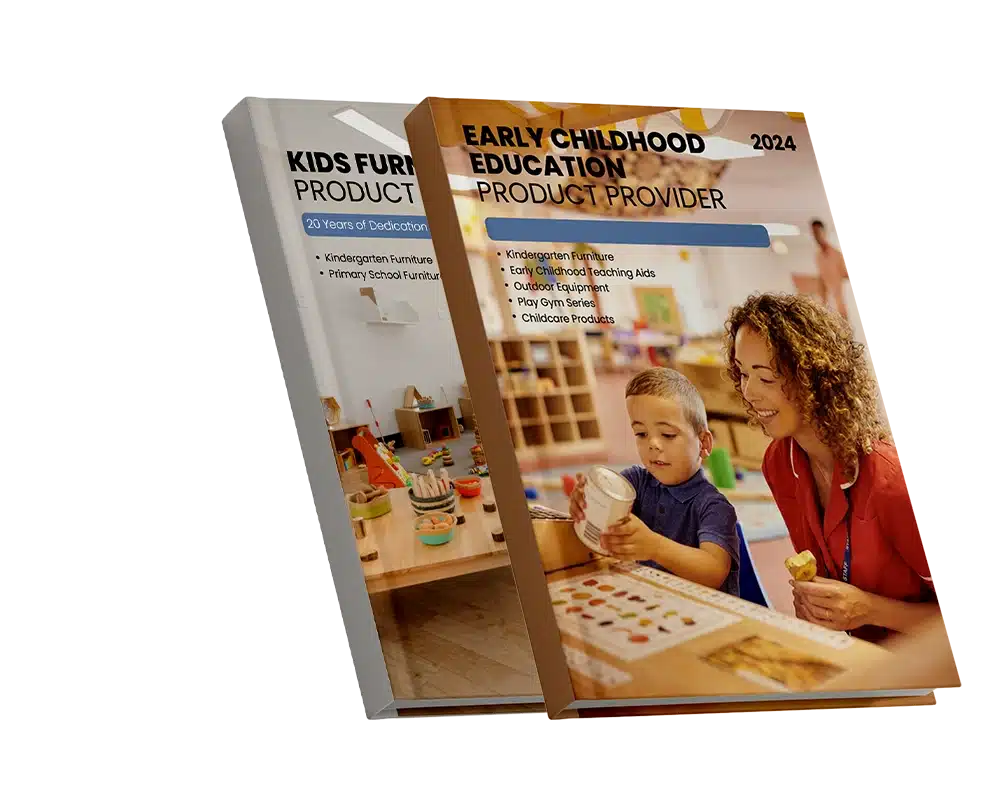
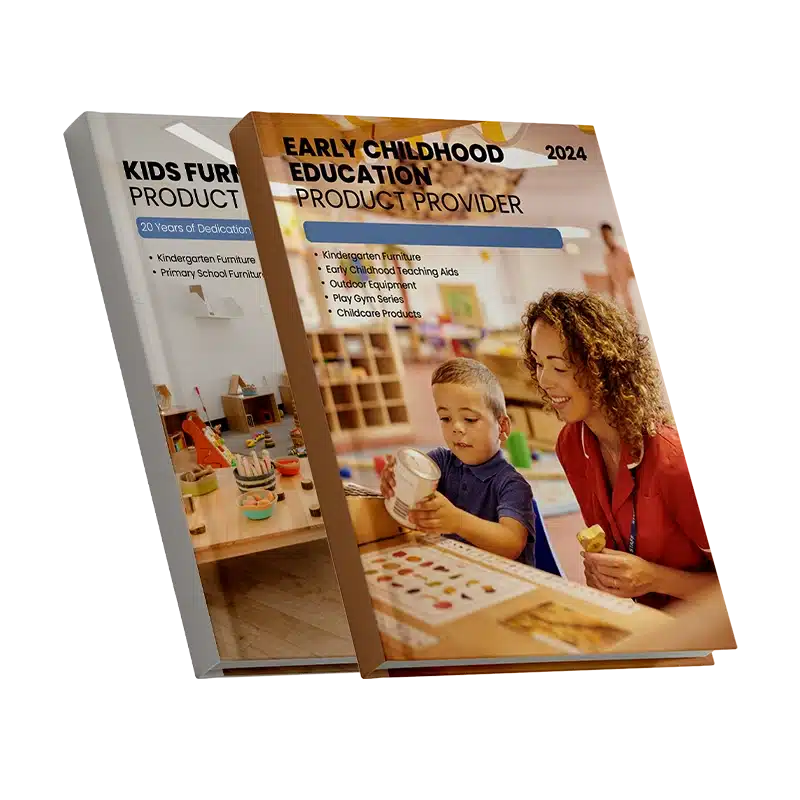
How Flexible Classroom Furniture Changes Learning
Implementing flexible classroom furniture significantly alters how students engage with their environment and each other. Let’s explore how this furniture promotes dynamic and effective learning:
1. Shifting to Flexible Learning Environments
Traditional classrooms often take a “one size fits all” approach, which doesn’t accommodate students’ diverse needs. Flexible furniture allows for a shift toward personalized learning environments. Depending on the task, students can work alone or in groups and adjust their learning space to suit their preferences. This flexibility supports different teaching styles and fosters an environment where students can take more ownership of their learning.
2. Flexible, Personalized Learning Approaches
In a flexible classroom, learning is not restricted to a rigid setup. Students can choose where they sit and how they engage with the content. This flexibility is especially important for students with special needs, as it allows for easier accommodations. Personalized learning approaches can be supported by furniture that adjusts to the needs of each student, promoting a sense of agency and empowerment.

How Flexible Classroom Furniture Impacts Learning
The positive impact of flexible classroom furniture on learning outcomes is undeniable. Here’s how it benefits both students and teachers:
1. Allowing Teachers to Easily Experiment
Teachers can quickly adapt the classroom layout to suit different teaching strategies. Flexible furniture allows for a fluid transition between teaching styles, whether they are experimenting with group work, project-based learning, or independent tasks.
2. Inspiring Collaboration
With movable desks and modular seating, students are encouraged to work together in teams. This promotes social learning, peer support, and collaborative problem-solving.
3. Comfort Fosters Focus
Comfort is directly linked to attention. Flexible classroom furniture ensures students can sit or stand in ways that promote focus, leading to a better learning experience.
4. Encouraging Student-Teacher Interaction
Flexible layouts allow teachers to circulate the classroom, engage with students one-on-one, and tailor their support to individual needs. This promotes more personalized learning experiences.
5. Creating More Space for Classrooms
With modular and lightweight furniture, classrooms can be more efficiently organized, maximizing space for various activities such as projects, presentations, and group discussions.
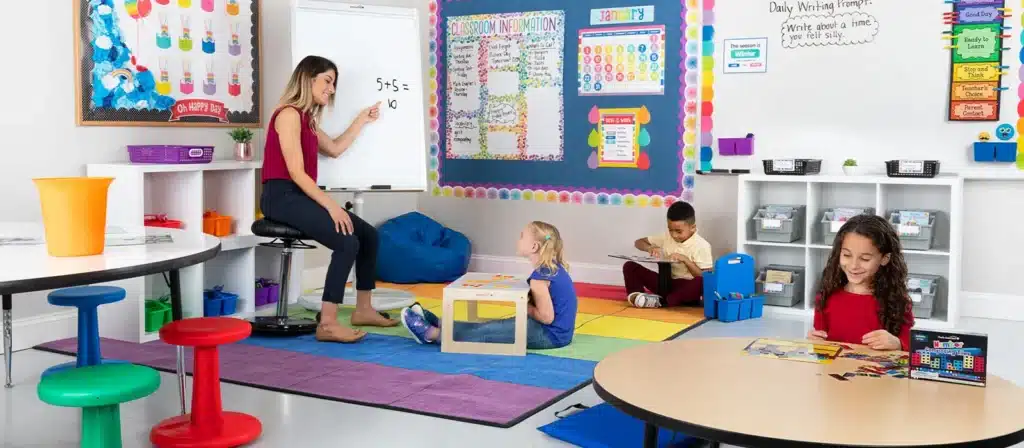
How Flexible Classroom Furniture Supports Collaborative Learning
Collaboration is essential in modern education, and flexible classroom furniture supports this by creating the perfect environment for teamwork. Desks that can be rearranged and chairs that can be moved allow students to interact more effectively. Collaborative learning environments promote critical thinking, problem-solving, and communication, all skills necessary for success in today’s world.
Maintenance and Care of Flexible Classroom Furniture
While flexible classroom furniture offers many benefits, it’s essential to maintain and care for these pieces to ensure their longevity and functionality. Regular cleaning, proper storage, and routine wear and tear checks will help extend your furniture’s life.
1. Cleaning and Sanitization
Regular cleaning is essential for keeping classroom furniture in good condition. Ensure that upholstery is regularly cleaned and disinfected for chairs, desks, and tables with fabric. For furniture with wheels, check the casters to ensure they are clean and free from debris that may affect mobility.
2. Routine Inspections
It’s important to regularly inspect flexible furniture for damage or wear. Check for loose screws, broken wheels, or worn-out surfaces. Ensuring that the furniture remains in good condition will prevent accidents and ensure a safe learning environment for students.
Conclusion
Flexible classroom furniture is not just a trend—it’s an essential tool for modern education. By providing an adaptable, comfortable, and engaging learning environment, flexible furniture supports students and teachers in ways traditional furniture simply cannot. As classrooms evolve, flexible furniture will remain at the forefront of education, fostering creativity, collaboration, and improved learning outcomes.
FAQs
- Is flexible furniture suitable for all grade levels?
Yes, flexible furniture is beneficial for all grade levels, from elementary schools to universities, as it supports different learning styles and teaching methods. - How can I involve students in the process of selecting flexible furniture?
Involving students can be done by allowing them to provide input on furniture arrangements or by letting them choose between different types of seating options. - Can flexible furniture help reduce classroom distractions?
Yes, by creating a comfortable and customizable learning space, flexible furniture can help students focus and minimize distractions. - Are there any safety concerns with flexible classroom furniture?
As long as furniture is designed with safety in mind and is sturdy, there are minimal risks. Always ensure that furniture is suitable for the age group it is intended for. - What types of flexible classroom furniture are most essential?
The must-have flexible furniture includes adjustable desks, movable chairs, and modular seating that can be easily rearranged to support various learning activities. - How does flexible classroom furniture improve student engagement?
It allows students to choose their seating arrangement, fostering comfort and collaboration, which enhances their focus and participation. - Can flexible classroom furniture support technology integration?
Absolutely! Many flexible furniture pieces are designed to accommodate technology, such as laptops, tablets, or smartboards, enhancing the learning experience. - Can flexible classroom furniture be used in any classroom?
Yes, it can be adapted to fit different classroom sizes and teaching styles.

